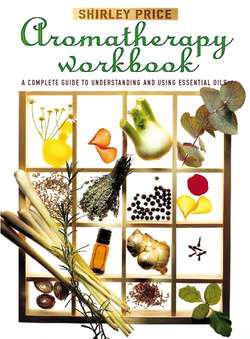Читать книгу Aromatherapy Workbook - Shirley Price - Страница 57
Asteraceae (or Compositae)
ОглавлениеThe flowers belonging to this family are daisy-like, each flowerhead being composed of many small flowers rather than petals (hence the name Compositae). Asteraceae may be easier to remember because that favourite and colourful garden flower, the aster, is a member of it. The plants from this family which most interest aromatherapists are the chamomiles, calendula (garden marigold) and tagetes (African marigold).
Family Properties and Effects The general properties which this family possess are antiseptic, soothing and anti-inflammatory to the skin and digestive system.
Caution There are ‘black sheep’ in the Compositae family, as all the artemisias, most of which are neurotoxic, belong to it. Because of their relatively high ketone or phenolic ether content artemisia oils are available in France only from pharmacies: wormwood (Artemisia absinthium – thujone); mugwort (Artemisia vulgaris – thujone), also known as armoise; tarragon (Artemisia dracunculus – estragole) are not generally used in aromatherapy in the UK and should not be made generally available.
Chamaemelum nobile, Chamomilla recutita and Ormenis mixta – flowerheads (chamomile) 1–1.7%
(See chapter 5 for other names for, and botanical differences between, these essential oils.)
Chamomile plants contain a colourless compound which decomposes during distillation to produce azulene, changing to a blue colour in the process.
Special Properties and Effects Because of its higher azulene content Chamomilla recutita is the most efficient in treating irritable or inflamed skin conditions. Chamaemelum nobile (containing a significant amount of esters) is favoured for gout sufferers and is undoubtedly the choice for children. Ormenis mixta, perhaps preferable for depression,28 contains more alcohols, and is sometimes called the poor man’s Roman chamomile as its price is lower.
FIGURE 4.2: German chamomile (Chamomilla recutita)
Tagetes glandulifera – flowers (tagetes) 0.2–0.4%
Tagetes is sometimes confused with calendula as both possess the common name of ‘marigold’ (chapter 5). It contains approximately 35–50 per cent of tagetone, a ketone, and its coumarin content makes it a photosensitizer (see chapter 6
